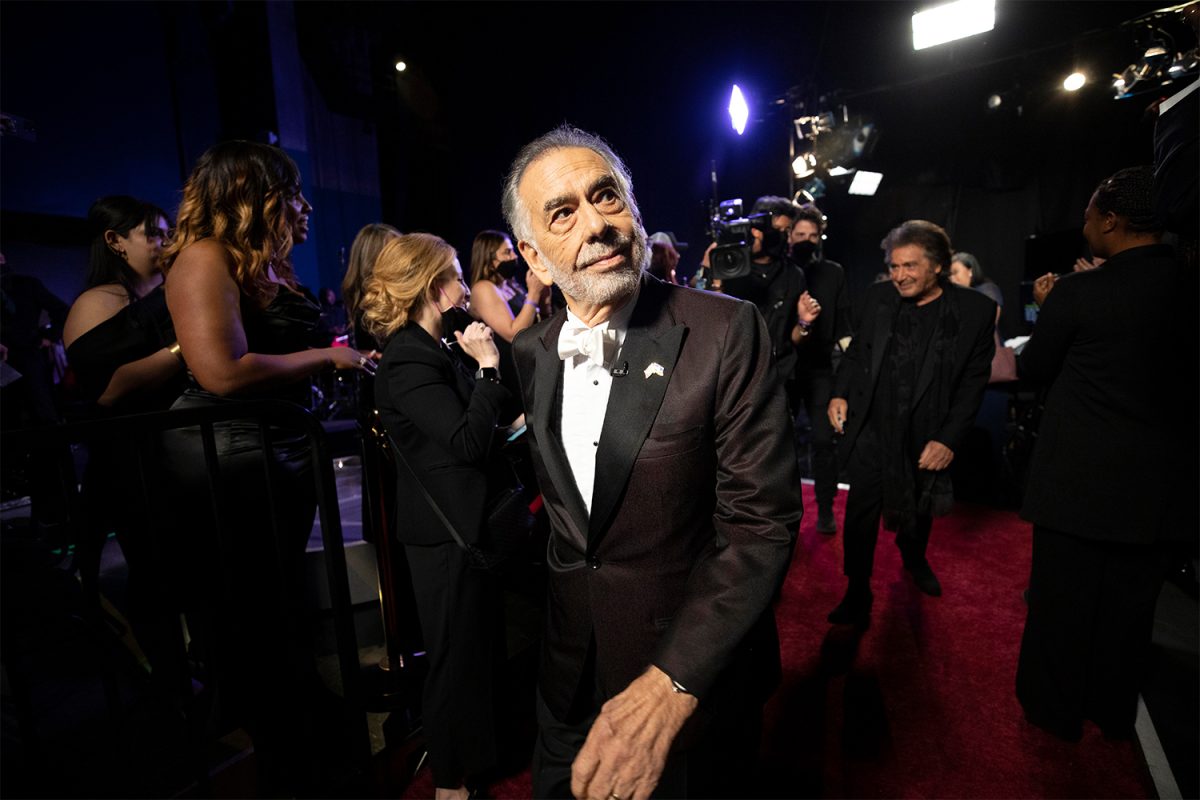I haven’t seen anything quite like “Megalopolis,” and I’m not sure I ever will. “The Godfather” director Francis Ford Coppola’s magnum opus is absurd, occasionally incoherent, and problematic — but ultimately brilliant.
The film is abrasive, beginning with a thunderous boom and smash cut to a gorgeously composed image of an orange sky and glorious skyscraper. Cesar Catilina, played masterfully by Adam Driver, steps onto the sloped roof of the tower, gazing over the skyline of New Rome and commands “Time Stop!”
In this opening scene, the film’s thesis is shouted at us. Catilina, a stand-in for Coppola, has many ideas for the future of the city that created him, yet he feels he doesn’t have the time to execute them.
After leaving “Megalopolis,” I wondered how much of the film’s obtusity and loud moralizing was intentional. Upon thinking about it for, admittedly, far too long, it’s become clear the fugue-like nature of the film is entirely purposeful.
The film is something you have to experience for yourself. The dialogue sways from contemporary slang to straight-up performing the “To be or not to be” monologue from “Hamlet.”
Nearly every line of dialogue feels strange but offers the stacked cast of actors an opportunity to make weird choices. At one point, Catilina shoos a young woman in his work office to “go back to da club” in an intonation I cannot fathom. I’ve been trying to replicate it with my friends since we left the theater.
Nothing about “Megalopolis” can be imitated, which is cause for celebration to me. The editing, sound, and towering images contribute to the film’s distinct personality. There is no greater feeling than watching a camera move and having no clue how it could have been pulled off.
Before the film was even released, it seemed many were primed for it to fail, not even willing to give the gonzo experience a chance. Some of this controversy was warranted, but some was not.
An extra on the film alleged Coppola was sexually abusive to several actresses on set. While it’s worth noting Coppola filed a lawsuit against Variety, who broke the story, for defamation, this mars the film. Several scenes that were already debatably sexist take on a new light amid the allegations.
Coppola also made a big deal about hiring canceled actors. Shia LaBeouf stars as the villainous Clodio Pulcher, a populist nepo baby who conspires to assassinate Cesar. His off-putting performance draws connections to Donald Trump, a figure Coppola has an outspoken hatred for.
The film is inherently politically charged for this reason, both in the context of the story and because of its real-life controversy. This blurring of lines between the story and reality, despite the surreality of the tale, is entirely on purpose.
In certain screenings, there is an interactive element halfway through the film. During a press conference scene, someone enters the theater and speaks a scripted line into a microphone, which Catilina seemingly answers.
“Megalopolis,” more than anything else, aims to incite discussion. The acclaimed director is old and wants to preserve a film culture that has more room for provocative films.
Cesar Catilina’s conceptualized utopia in the film reshapes and contorts depending on the needs of its inhabitants. Coppola seeks to create a film that morphs with our times, providing a wide canvas for viewers to cast any lens they wish upon it. At its core, that is what good art does.
Perhaps my soapboxing about the universal conceit of art is ridiculous when it is placed in the context of a film in which Aubrey Plaza plays a character named Wow Platinum.
But that’s the beauty of “Megalopolis” to me.
It’s simultaneously hilarious, odd, awe-inspiring, and intellectually satisfying.
Coppola self-financed the film — raising money since the 1980s — and may lose millions on this ambitious venture, but I’m certain I’ve gained a film I will be thinking about for the rest of my life.



